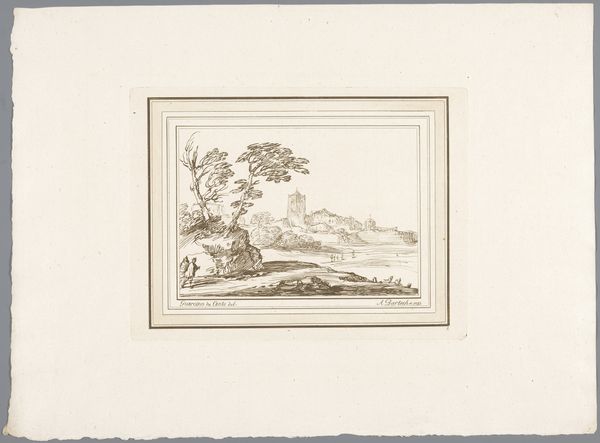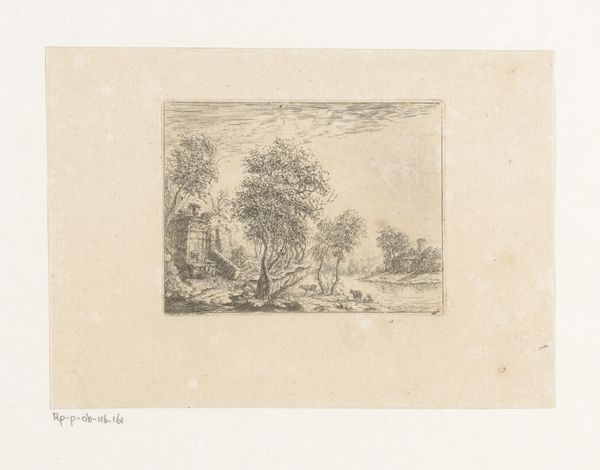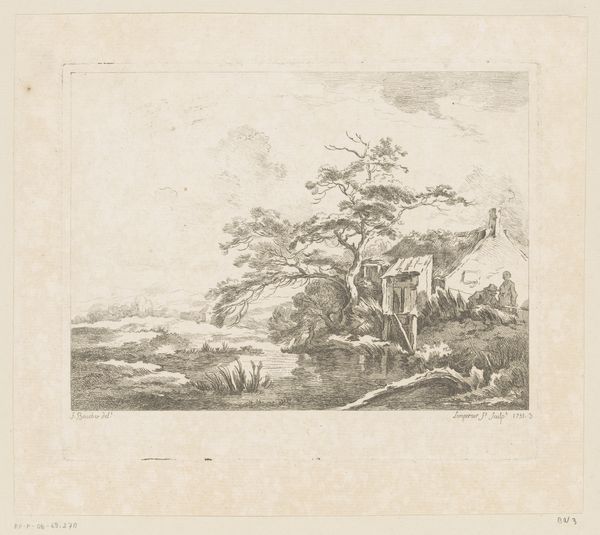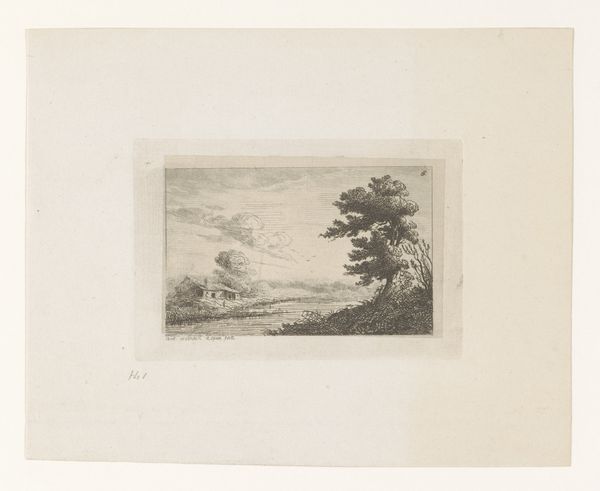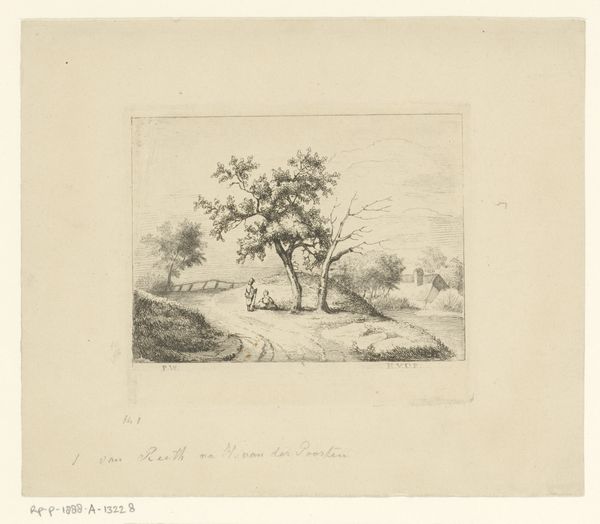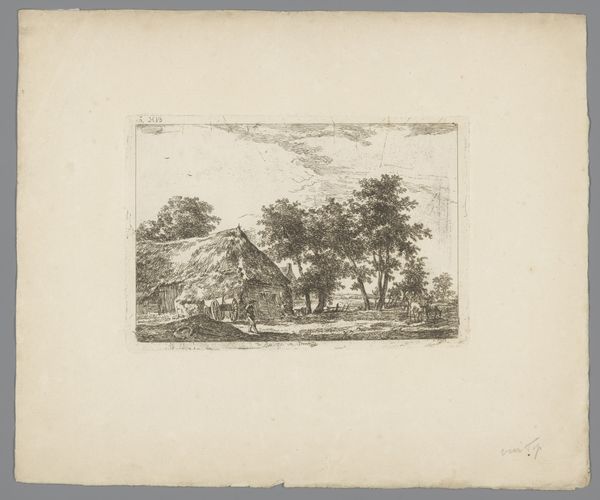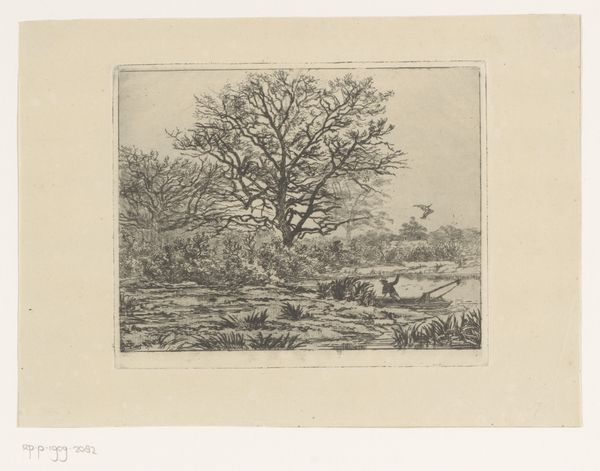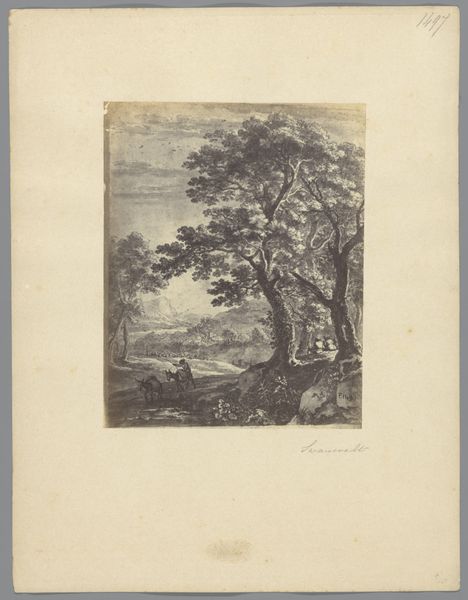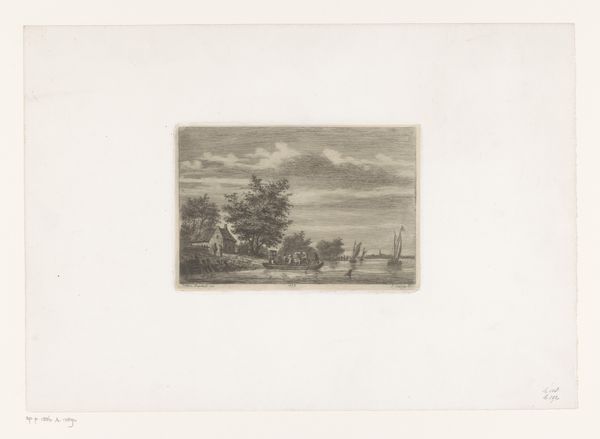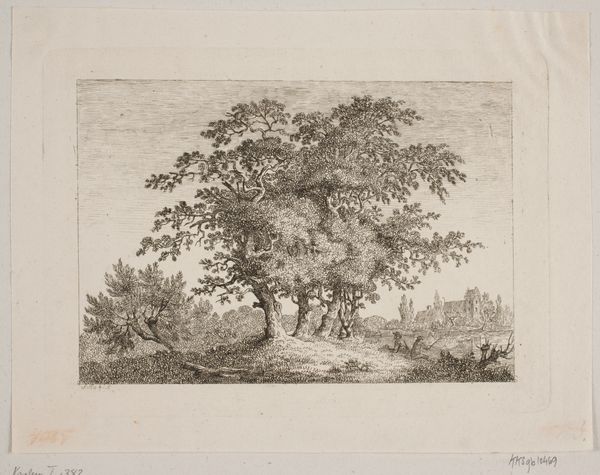
Dimensions: 71 mm (height) x 115 mm (width) (plademaal)
Elias Meyer made this landscape with an oak tree using etching, a printmaking technique that democratized image production in the 18th century. The process begins with a metal plate coated in wax. The artist scratches an image into the wax, exposing the metal underneath. The plate is then submerged in acid, which bites into the exposed lines. The deeper the bite, the darker that line will appear when printed. Ink is applied to the plate, filling the etched lines, and the surface is wiped clean. Finally, the plate is pressed onto paper, transferring the ink and creating the print. Etching allowed for relatively quick reproduction, making images accessible to a wider audience. The fine lines and delicate details of the oak tree and figures demonstrate Meyer’s skill with the etching needle, and the atmospheric perspective he creates by varying the depth of the etched lines. These allowed artists to disseminate their ideas more broadly, fostering a visual culture tied to commerce and public consumption. By understanding the materials and making processes of prints like this, we can fully understand the importance of these kinds of images at the time.
Comments
No comments
Be the first to comment and join the conversation on the ultimate creative platform.
